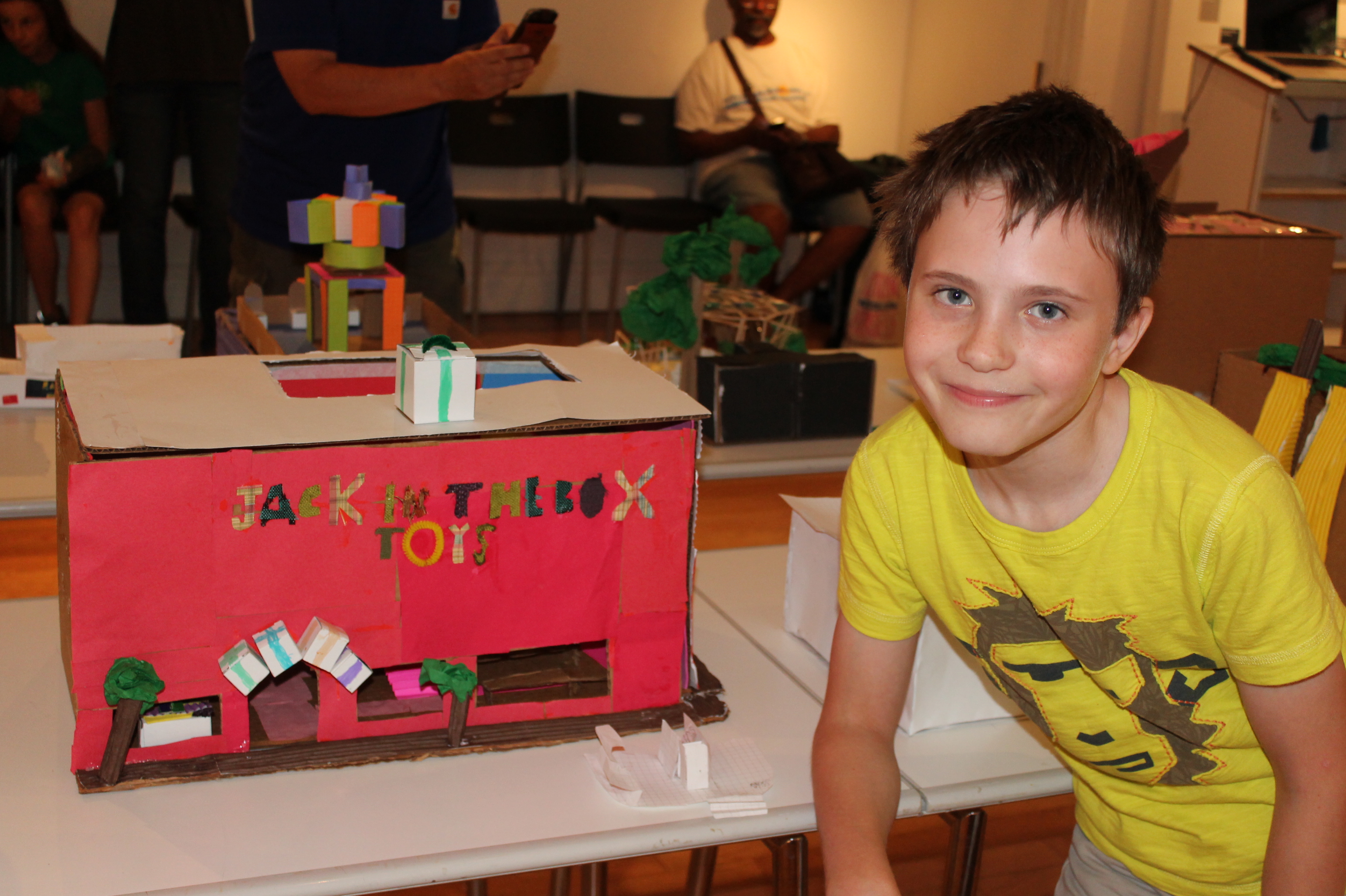by Lauren P. Burner-Lawrence
Nothing implies “I trust you” more than handing an 11-year-old a box cutter and a ruler and declaring, “Now build it!” This summer, the Center for Architecture reprised its week-long summer camp model to spark imaginations and encourage collaboration with hands-on crafting and model making. Facilitated by Howard Stern, Center for Architecture Design Educator & Architect, and supervised by Tim Hayduk, the Center’s Lead Design Educator, the “Store Design” program served roughly 18 young architects in middle grades at the Center’s West Village home. The single task – create your own store –- sounds simple enough, but the journey from brainstorming to concept presentation proved to be just the right amount of complexity for a five-day project.
To begin, students brainstormed and researched ideas. Then they created net-like miniature prototypes using heavy-duty graph paper. As they transitioned to building larger models, with a final presentation and key design “elements” in mind, the entire week balanced work-time in the studio with field trips to SoHo stores like Camper, Prada, and Hollister. Guided by a rubric and working in teams, students were able to pause, observe real stores in action, and bounce ideas off of their peers before diving back into their personal projects. Finally, they presented and described their work at a parent gathering, where a flower shop, a candy store, and many other models were proudly placed on display.
This deep dive into design thinking reminded me of the power of personalization, project based learning, and student choice. Despite the sounds of real construction in the Center’s main gallery, the Store Design participants ignored the and concentrated on their work. And despite the eerie quiet of sincere focus and attention, students voiced a sense of relief over the course of the week when asked to compare the Center’s program to school. In short, this summer camp – an environment without the pressure of earning a final grade – created a bare-bones makerspace free of conflict and full of imagination. The environment, though low-tech by nature, was a rich STEM setting buzzing with creative energy and, based on largely glowing student feedback, a huge success.
Lauren P. Burner-Lawrence, MSEd, is an educator, trainer, and consultant specializing in educational technology. As part of her field work for NYU’s Games for Learning Master’s program, she observed the Center for Architecture’s Summer@theCenter week. @gamez4learning

